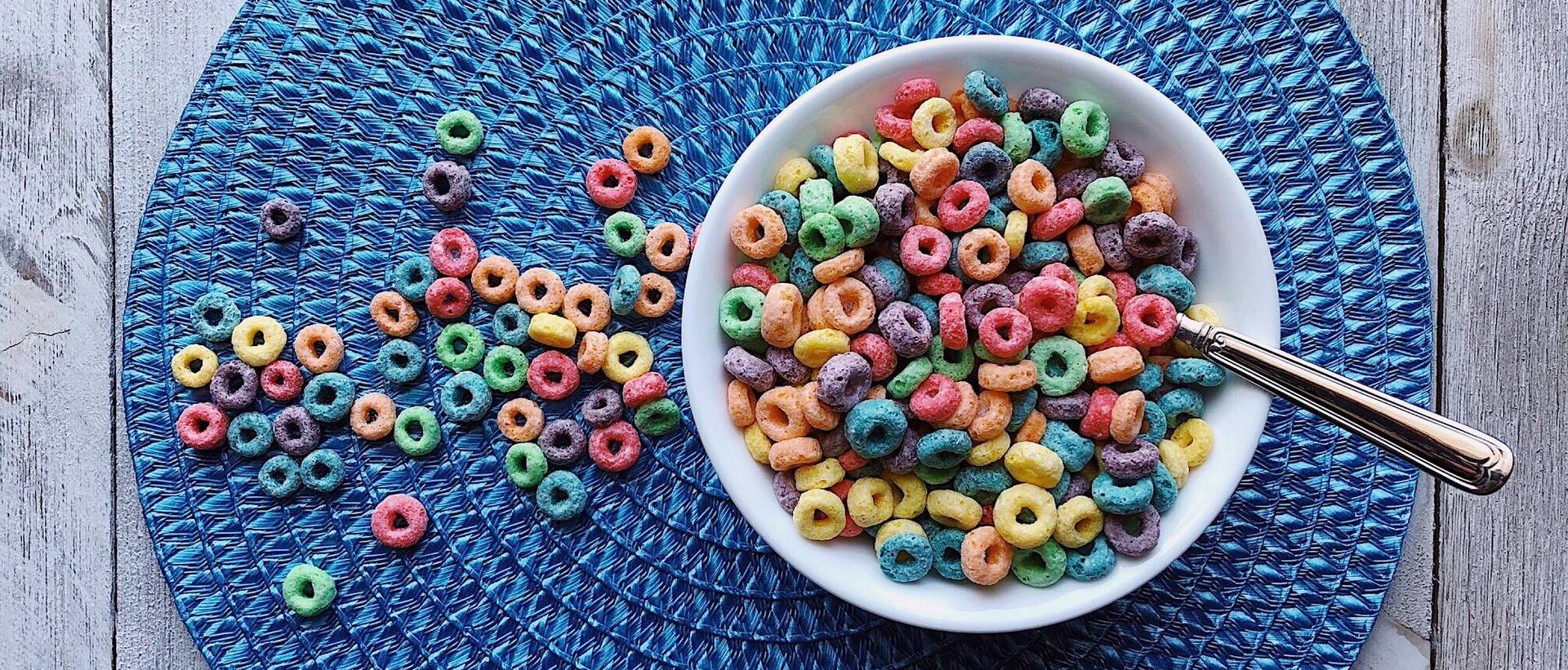Food Additives and the Gut Microbiome

PREMIUM CONTENT for MEMBERS ONLY
By Katharine Jameson
Summer is defined by vacations as much as it is by ice cream and popsicles. It was Memorial Day weekend and we had invited ourselves to barbeque at my in-laws’. My mother-in-law said she would have “tons of popsicles” and I shuddered, assuming she would get the ones that are “all fruit,” but laden with sugar. “It’s a holiday,” I told myself, as I channeled Elsa, “let it go.”
It was worse…so much worse. She had tried to be healthy. A well-meaning, health-conscious woman, she scoured labels and decided upon “no sugar added” popsicles and “skinny” ice cream, which contained lots of hidden artificial sweeteners and added colors. Sadly, it seems we need to learn a new language to read food labels.
We’re on the go as parents, whether we want to be or not. We need easy options and quick things to throw together for dinner, or into a lunch box and very often, we rely on large processed food companies to give them to us.
As an 8-year-old kid, I wore a Boys XL in snow pants. I dread my seven-year-old having to go through what I did. It’s a crazy world and an even crazier playground. By second grade, kids may not have learned road rage yet, but they know how to make pointed remarks about others’ appearances.
We all want what’s best for our kids. We want to feed them good food and give them ample opportunity from the onset. We think about their education and carve out their future in our minds before they’re even born.
Although the gut microbiome science is only a few decades old, the more we learn about the microbiome, the more we realize how imperative it is to establish it from the onset and to establish it well. Often, we’re told not to “sweat the small stuff” but in gut health, it’s the smallest stuff that matters. Not only are our gut bacteria infinitesimal, but slight changes can make a world of difference.
It’s reported that the composition of the gut microbes is initiated during our journey through the birth canal. Babies delivered via cesarean section miss this initial opportunity but adopt bacteria from the hands and skin that touch them upon delivery. It’s been called the “bacterial rite of passage.” Unromantically, it seems like the start of a NASCAR race. Flags are waved and bacteria rushes to the newborn to see which can initiate the microbiome and shape its health for life.
Since we only have about the first three years of life to fully establish the microbiome, we’ve no time to waste. After that, it serves as our blueprint for life. There is evidence to suggest that our gut microbiome has an important influence on if we’re sick or healthy, filled with energy and longevity, or the lack thereof. Many of us who can, jump into breastfeeding, which plays an important role in aiding the development of a healthy community of gut microbes and immunity. Babies who do not descend through the birth canal and those who are not breastfed can make it up later in life, but may be vulnerable during the time spent doing so.
When we start our littles on solids at about five to six months, we’re suddenly at the mercy of Big Food. While food choices are important – a sweet potato is healthier overall than a white potato – it’s “kid food” that really matters. More and more bright colored, sweet and tasty processed foods are churned out of factories, shoved into our clutching hands and packed into the lunch boxes we thrust at our kids as they walk out the door to school. Yogurt tubes are convenient, as are juice or flavored milk boxes. What would we do without individually wrapped snack crackers or cookies? It’s not the convenience that is a problem, or is it?
The quality of food that is fast and convenient is compromised. We often cannot have quality food that is fast and cheap. We try, but America currently finds itself overweight, sick and prediabetic whilst in the clutches of fast, cheap and convenient food. It might be a panoramic coincidence, but me thinks not.
While promoting a healthy gut microbiome by providing our kids with healthy foods, there are several additives that rob us all of good gut health. The FDA allows more additives in our food than any European country, making the choice of what to eat some of the toughest ones we face as parents. While we may not be able to avoid them all, here are the top seven additives to kick to the curb when it comes to our kids (and ourselves).
Artificial Sweeteners
It’s tempting to choose ‘no sugar added’ or ‘sugar free’ products. While these products do not contain ‘sucrose’, they contain artificial sweeteners like sucralose, sorbitol and aspartame. Sucralose is chlorinated sugar, which makes it fly under the caloric radar as ‘zero calories’. It’s found in diet drinks, fruit cups, yogurt and even English muffins! While they may seem harmless, artificial sweeteners can exacerbate sweet cravings and make us eat more calories in general.
Cancel the Colors
“Eating the rainbow” should only pertain to colorful fruits and veggies. Food colorings have been liked to hyperactivity including ADHD, irritability and even depression. Many hues have been linked to tumors in lab rats. Colorings are found in candies, drink mixes, chewing gum, popsicles, toaster pastries, granola bars, fruit snacks, ice creams, crackers and marshmallows.
Not-So-Natural Flavors
We may be onto the term “artificial” enough by now to steer clear of it except on rare occasions, but the word ‘natural’ offers us the assurance that the product is just that – natural and at least somewhat good for us. When it comes to flavorings, both artificial and natural flavors are derived in a lab and chemically processed. Artificial flavors are surprisingly the fourth most common ingredient listed on food labels and are actually regulated more stringently than their ‘natural’ counterparts. From water, cereal, yogurt, kefir, chewing gums and condiments to marinated meats, ‘natural flavors’ are found everywhere.
BHA (butylated hydroxyanisole)
This preservative has been deemed “reasonably anticipated to be a human carcinogen” by the National Toxicology Program, U.S. Dept. of Health & Human Services. It’s said to be endocrine disruptor and can be found in granola bars, processed meats, packaged nuts, soups, chips, canned beans and spaghetti sauce.
MSG – Monosodium Glutamate
This umami flavor enhancer not only keeps us coming back for more, but is reported to excite brain cells to the point of expiration. This is something we simply cannot afford, as brain cell death is associated with neurodegenerative diseases like forms of dementia, including Alzheimer’s and Parkinson’s disease. MSG comes under multiple names including natural flavors, yeast extract, hydrolyzed corn and textured protein and is found in packaged soups, noodles and rice, frozen meals and many other processed items.
Mono- and Diglycerides
Since war was waged on trans fats in 2015, consumers have paid closer attention to the amount of unhealthy fats in our food. Trans fat labeling can be tricky, since nearly a half gram can be found in each serving size, but mono- and diglycerides are even trickier. Derived from oils, these substances are classified as ‘emulsifiers’ instead of the lipids they are, subsequently avoiding the trans fats line on the nutrition label. They are, in fact, trans fats, which the CDC has linked to heart attacks. The Institute of Medicine says trans fats have “no known health benefit” and there is no safe level to eat. Monoglycerides and diglycerides are commonly found in gluten free pastas, frozen yogurt, low fat ice cream, peanut butter, tortillas and bread.
Potassium Bromate
A common additive used to strengthen dough, it allows bread to rise higher. California is the only state in the nation that requires a warning label on products that contain bromate, but studies suggest it causes thyroid and kidney cancer in lab rats and mice. This is why it’s banned not only in Europe, but in China, Canada, and Brazil as well. It can be found in hamburger and hotdog buns, pizza doughs and breakfast sandwiches.
While moderation in everything might sound like perfection, omitting these seven additives might make it a bit more of a perfect world.
DIY Popsicle Treats
Ingredients
1 ¼ cup frozen blueberries
½ cup apple juice
1 cup plain Greek yogurt
2 tablespoons real maple syrup
¼ cup unsweetened shredded coconut
2 teaspoons vanilla extract
2 shakes cinnamon
Method
Blend one cup blueberries with apple juice until a pureed sorbet.
Fill each popsicle container to about one third full.
Mix yogurt, syrup, coconut, vanilla and cinnamon.
Layer remaining frozen blueberries between sorbet layer and yogurt.
Use funnel to layer yogurt atop sorbet.
Layer remaining blueberries.
Freeze overnight.
 Katharine Jameson is a graduate of Syracuse University and a Certified Health Counselor. Her growing interest and research in nutrition solved her own weight problems. A mother of two, she is compelled to share the ease with which good health is obtained through the integration of good foods and proper nutrition. Based in Los Angeles, Katharine writes a weekly column where she discusses pivotal health topics and interviews cutting edge experts. She can be found on Instagram at @foodforthoughtwithkat.
Katharine Jameson is a graduate of Syracuse University and a Certified Health Counselor. Her growing interest and research in nutrition solved her own weight problems. A mother of two, she is compelled to share the ease with which good health is obtained through the integration of good foods and proper nutrition. Based in Los Angeles, Katharine writes a weekly column where she discusses pivotal health topics and interviews cutting edge experts. She can be found on Instagram at @foodforthoughtwithkat.